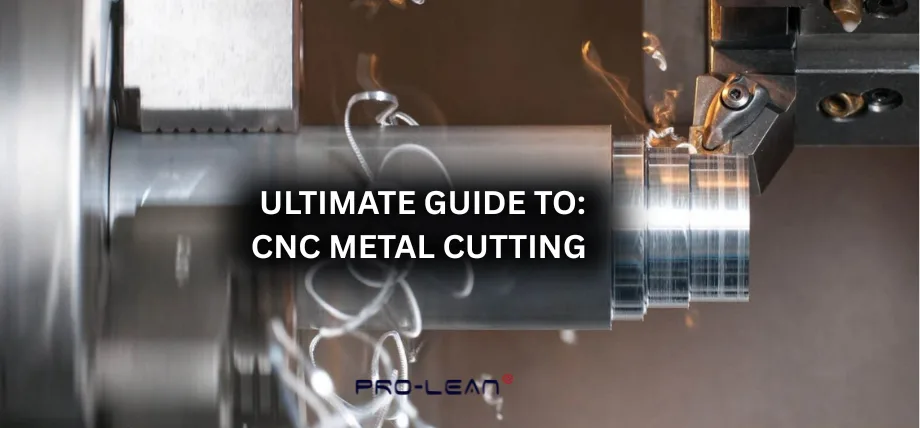
CNC Lathe Turning
CNC metal cutting is a vital building block of modern manufacturing, allowing you to efficiently manufacture accurate, intricate metal parts. It is widely used for machining metals, and CNC machines automate the cutting, shaping, and finishing of metallic workpieces.
Whether you are in automotive, aerospace, or custom fabrication, understanding the process of CNC metal cutting is important. It allows you to achieve high precision and product quality.
This blog will guide you through the process, the types of CNC machines available, their advantages , and practical tips to maximize the efficiency of your metal cutting project.
What is CNC Metal Cutting?
CNC metal cutting is a process that utilizes CNC machines to cut away material from a metal workpiece, creating a specific shape. These machines, controlled by numerical control and a microcomputer, yield high-dimensional accuracy and repeatability.
Tools such as mills, lasers, or plasma cutters can cut steel, aluminum, or any other metal. It is essential for manufacturing customized components, providing smooth surface quality and tight tolerances. As detailed in recent blogs, CNC metal cutting promotes precision, which is necessary for industries reliant on high-quality metal parts.
Why CNC Metal Cutting Matters
CNC Metal Cutting can create intricate geometric designs with minimal material waste. With CNC, process consistency is guaranteed, unlike manual methods, making manufacturing both small-batch and production CNC projects cost-effective.
Modern CNC with high-speed capabilities, such as fibre laser cutters, maximise efficiency, enabling you to produce quality parts and components from sheet metal. Different CNC processes produce different geometries and parts.
What Is the Process of CNC Metal Cutting?
Creating a CAD metal design is the first step in CNC metal cutting; CAM software allows you to translate the CAD design into machine instructions. For material removal from the workpiece, a CNC machine employs different tools — end mills, drills, or laser cutters.
While the spindle spins the cutting tool at high speeds, the feed rate controls precision, wear, and removal rate. The metal is stabilized and fixed into a workholding setup, which keeps it in a single position.
Key Components in the Process
CAD/CAM Software
The first step is designing parts and generating toolpaths for the CNC machine. 3D parts are made in a CAD program and converted to machine-readable instructions using any CAM software.
Spindle and Cutting Tool
Most parts use CNC mills with a rotating spindle shaft attached to a tool. The tool geometry and material influence the part quality and finish. CNC turning is used for symmetrical cylindrical parts, which can produce external features and drilling by rotating the workpiece.
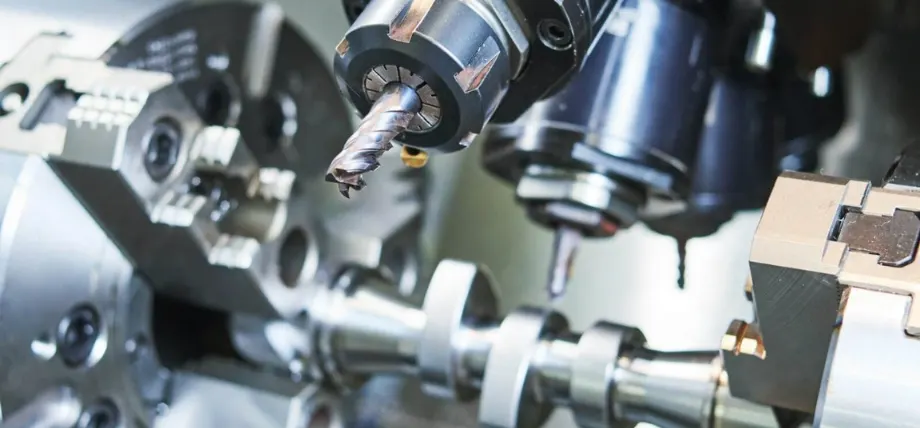
CNC Milling tools
Workholding and Custom Jigs
Clamps or vises secure the metal workpiece as it is cut.
Coolant
Coolant is not the same as machine coolant. Coolant here refers to cutting fluid that dissipates heat and improves tool life and surface finish.
Try Prolean Now!
Various Types of CNC Machines Used in Metal Cutting
You can use numerous CNC machines for metal cutting, and they are most appropriate for defined tasks.
CNC Mills
CNC milling machines use rotating cutting tools to remove material. You can mill edges, holes, or complicated forms in metal. CNC mills, like 3-axis and 5-axis, are designed to make complex metal shapes suitable for car parts and aircraft.
The basic structure of a milling tool is determined by specifying the number of flutes on the cutting tool, which is directly responsible for chip removal and surface finish.
CNC Routers
They are multi-purpose CNC routers that can route softer metals such as aluminum. Cut sheet metal or build custom parts accurately. Unlike mills that are meant to cut heavy-duty parts, routers use high-speed cutting tools and are ideally suited for less dense materials.
CNC routers are primarily used in woodworking designs.
Laser Cutters
Laser CNC machines, particularly fiber laser machines, use a highly focused laser beam for high-energy cutting. This means you can make detailed cuts with very little material wastage.
Laser CNC cutters can cut sheet metal of various gauges and you can adjust the intensity to produce markings and engravings on the metal.
Plasma Cutters
Plasma CNC machine utilizes a plasma cutter to cut thicker metal. You have the advantage of rapid cutting speeds, but edge quality may necessitate some post-processing. CNC plasma cutting is well-suited for heavy-duty applications such as structural steel fabrication.
Waterjet Cutters
Waterjet machines cut metal with high-pressure water combined with abrasives. You can also cut other materials without introducing heat-affected zones. For more accurate cuts on thick metals, waterjets are ideal.
These are some of the CNC machining processes for metal cutting.
Pros of CNC Metal Cutting
Because of its many advantages, CNC metal cutting is a popular metal fabrication process.
- High Accuracy: You obtain close tolerances and dimensional precision.
- Versatility: CNCs can cut various materials from steel to softer metals.
- Efficiency: The use of automated processes lessens the labor and fast-tracks the output.
- Cost Efficient — Waste and repeatability lessen the cost of custom parts and designs.
- Complex Geometries: You can cut complex shapes on metal easily.
What is the CNC Metal Cutting Process?
The steps of the CNC metal cutting process maximize production and keep human errors to a minimum.
Processes Involved in CNC Metal Cutting
After the CAD and part design,
Toolpaths
CAM (Computer-Aided Manufacturing) software is used to create toolpaths for the CNC machine. These toolpaths are optimized for the particular CNC machine and the cutting tool. Before generating tool path you need to select the cutter and the workpiece placement and the depths of cut, feed and cutting speed.
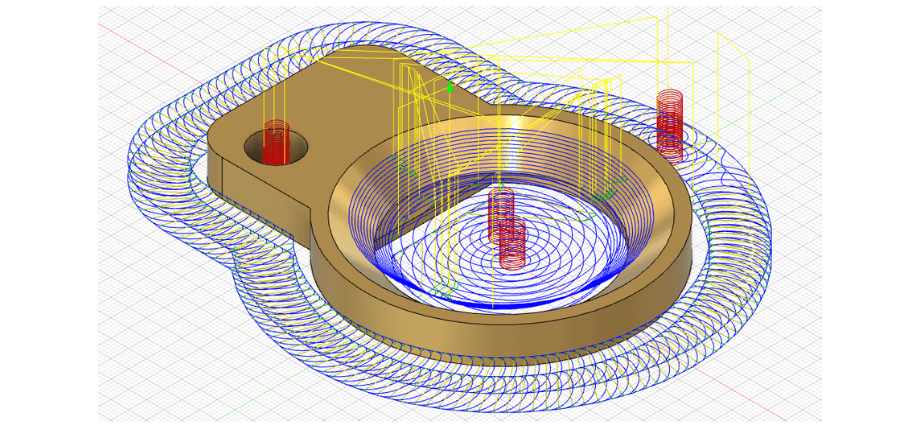
Cutting toolpath for a brass part
CUTTING
Secure the workpiece with workholding and load the cutting tool. The equipment breaks or chips away at the material. End mills or lasers can be used.
Finishing Cut
A smooth surface finish is ensured by post-processing.
Try Prolean Now!
Influences of Cutting Tool on Metal Cutting Process
Cutting Tool Geometry
The geometry, material, and number of flutes of the cutting tool can greatly affect performance. Carbide tools are used for metal removal for their longevity. When working with softer metals, use a cutting tool with fewer flutes, which causes better chip removal.
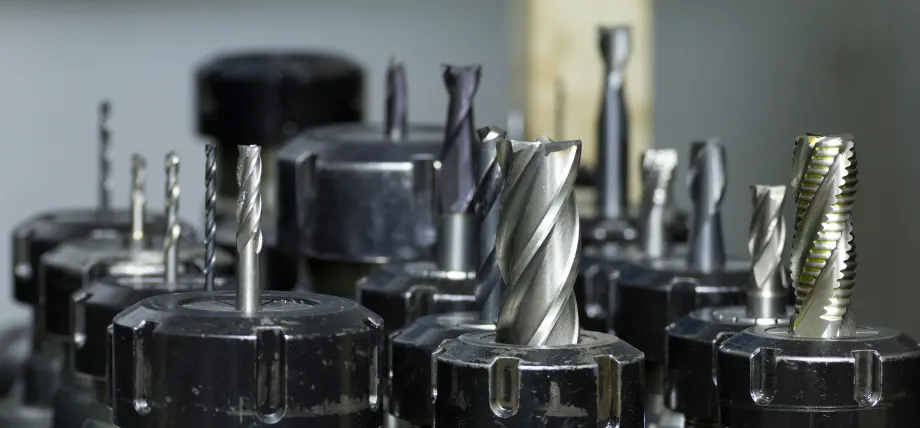
CNC milling tools
Cutting Fluid
Cutting fluid diminishes heat, extends tool life, and enhances surface finish. For instance, when I first started milling aluminum on a CNC mill, I didn’t think to use coolant, which led to wear and poor finishes. My results changed dramatically with a water-based coolant.

CNC drilling with coolant flushing
Selecting the Best CNC Machine for Metal Cutting
Choosing the best CNC machine is not a simple task
Important Factors to Consider
- Material Type: Thicker metals may need plasma or waterjet cutters.
- Metal Parts: Laser cutter for small, intricate metal parts and metal sheets.
- Production Volume: For production CNC, you can consider high-speed CNC mills.
- Budget: Routers are affordable for smaller shops.
- Software Compatibility — It must support your CAD/CAM tools.
I picked up a CNC router for aluminum-cutting early in my career. It worked, although a mill would have been faster for deeper cuts.
Applications of CNC Metal Cutting In Various Industries.
CNC metal cutting is used in various industries to create quality metal parts. So, based on it, you can take advantage of its exactness, such as in the blogs written in Racer International.
- Automotive: Engine parts, brackets, and custom components.
- Aerospace: Lightweight, precision parts for aircraft are produced by CNC mills.
- Construction: Structural steel components are fabricated by plasma cutters.
- Fabrication: Laser cutters produce complex metal sheet parts.
- Medical: surgical tools
The CNC Laser Cutting In Metal Fabrication
A laser cutting machine passes a high-energy laser through a piece of metal to accurately cut it. You can manufacture in-depth shapes and tiny openings in sheet metal fabrication. Speed and edge finish are some considerations in custom parts production, and fiber lasers provide great answers to these issues.
Laser cutting’s versatility makes it equally suitable for prototyping and production.

CNC Laser cutting
CNC Metal Cutting Solutions at ProleanTech
CNC metal cutting requires precision machining and DFM optimization. At Proleantech, we’ve served hundreds of customers with custom machining solutions.
Learn more about our machining solutions and get a free quote today!
FAQ
Why Use Laser Cutters for the Metal Parts?
They can cut material with high accuracy while wasting very little and providing great edge quality. You can also quickly cut complicated metal patterns , and a fiber laser works well with multiple materials.
How do you get perfect surface finishes when laser cutting?
The cutting speed should be optimized for a smooth surface finish using a direct laser beam with definition. Correct workholding eliminates vibrations, while post-processing – such as sanding — improves results. Cleaning out your laser cutter helps keep performance optimal.

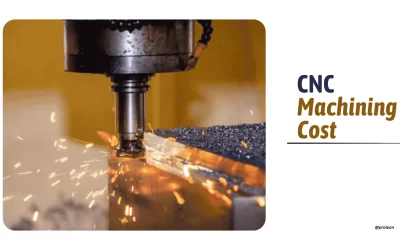
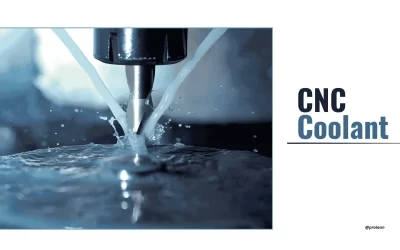
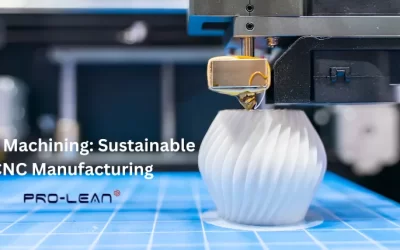
0 Comments